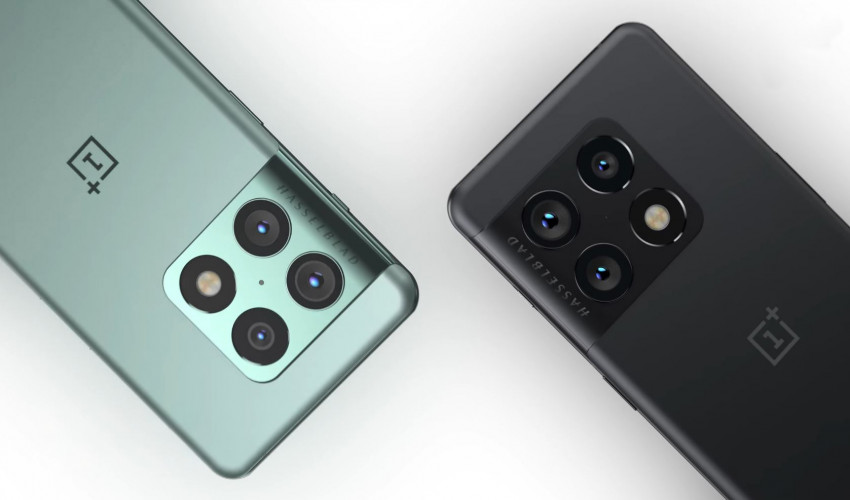
OnePlus has been, like it does, trickling out details about its upcoming OnePlus 10 Pro for a few days now. Monday, we got a full reveal of the phone's design. Tuesday, we learned about the specs. We got a taste of camera details in the spec to reveal, but today, OnePlus has more to share, including details about improved color accuracy, manual shooting modes, and a new, really wide ultra-wide camera.
The 10 Pro will be OnePlus's first phone that shoots in 10-bit color by default. In case you're not that into photography, that more or less means that the 10 Pro's cameras can capture more colors than those in prior OnePlus devices can — just over a billion, Redmi note 10 price in pakistan in fact, which is why OnePlus is calling this the OnePlus Billion Color Solution. Being able to dial in colors with more granularity should mean that photos look more accurate to real life and that gradients should look smoother with less color banding.
In an improved Hasselblad Pro Mode, the OnePlus 10 Pro will be able to capture 12-bit RAW files, up from 10-bit in the 9 Pro's Pro Mode. Photos shot in 12-bit color can contain up to 68 billion colors, and also have a better dynamic range than photos shot at lower color depth. You'll also have the choice to have Pro Mode kick out both an unprocessed RAW file and a processed version that still retains Pro Mode's enhanced color depth. Of course, whether you'll benefit from any of this depends on how you'll be viewing your photos.
OnePlus is also debuting a feature it's calling Movie Mode on the 10 Pro. Essentially a pro mode for video, Movie Mode lets you manually control parameters like frame rate and ISO while recording. There's an option to shoot in LOG format, too, which video nerds will know means greater editing flexibility after the fact.
Finally, the 10 Pro's ultra-wide camera field of view is really, really wide: 150 degrees. Most smartphone ultra-wide shooters — including the OnePlus 9 Pro's — hit about 110 degrees, meaning the 10 Pro can pack way more into the frame. Shots using the ultra-wide to their fullest extent will distort pretty heavily around the edges, but you'll also have the choice to crop to a more traditional 110-degree field of view. There'll also be a fisheye mode.
In spite of its ongoing partnership with storied camera manufacturer Hasselblad, historically, OnePlus hasn't been able to compete with the best cameras in phones from companies like Google, Samsung, or Apple. It's not yet clear whether these new tricks will help OnePlus close the gap — the Pixel 6 takes very good photos — but it's fun to watch it try all the same.
What about performance, memory, sound, and autonomy?
Redmi 10 can be classified as an "advanced entry-class" smartphone. That is, it is powerful enough not to strain the average user with the brakes. The MediaTek Helio G88 chipset has six Cortex-A55 cores operating at 1.8 GHz and two more powerful cores, Cortex-A75 at 2 GHz. The Mali-G52 MC2 is used in the role of the GPU. In the tests, the picture is predictable, the scores are low. In everyday work, a potential owner of such a model will not have any problems, the interface works responsively, and it is quite possible to play with simple toys.
The amount of RAM corresponds to the class of the device: 4 or 6 GB. For storing information, 64 or 128 GB can be available, also depending on the configuration. It's good that you can expand the memory with a microSD card, and not at the expense of a second SIM card since the smartphone is equipped with three separate slots.
The set of communications, in general, betrays the budget nature of the Redmi 10. There is no support for Wi-Fi 6 and fifth-generation mobile networks, as well as NFC. The latter threatens to turn into a red light for some when making a purchase decision. But the fifth Wi-Fi operates in dual bands, there is Bluetooth 5.1, an infrared port for controlling equipment, traditional for Xiaomi, and even an FM radio with a recording function.
The sound capabilities of the smartphone are distinguished by stereo speakers, which we have already mentioned above, and the presence of a headphone jack. It can be seen that in the absence of moisture protection, the manufacturer does not skimp on holes in the case.
The 5000 mAh battery does not support modest smartphone requests for so long: about eleven and a half hours in the PCMark test. I would also like to note the extremely low power consumption in standby mode. It so happened that the test Redmi 10 had to lie around for a while next to several other smartphones. And the indicators of the remaining charge for several days have changed the least significant. Of course, no one buys a smartphone to just lie on the shelf with a charged battery, but the signal itself is good.
Charging is considered fast, but not particularly impressive by today's standards. The battery reaches 50% of its capacity in 50 minutes, and it will take almost two hours to fully charge it. But there is an interesting trick here: the kind Radmi 10 is ready to share energy and charge other devices. To use your smartphone as an impromptu power bank, you need any USB-C to USB-A adapter (not included). You can charge other Android smartphones as well as iPhones or headphones in general.
What about the firmware and interface?
Redmi 10 runs Android 11 with MIUI 12.5 skin. On the smartphone, in addition to the basic ones, some additional applications are preinstalled: Netflix, Amazon, eBay, Facebook, and half a dozen toys (from completely casual to PUBG).





